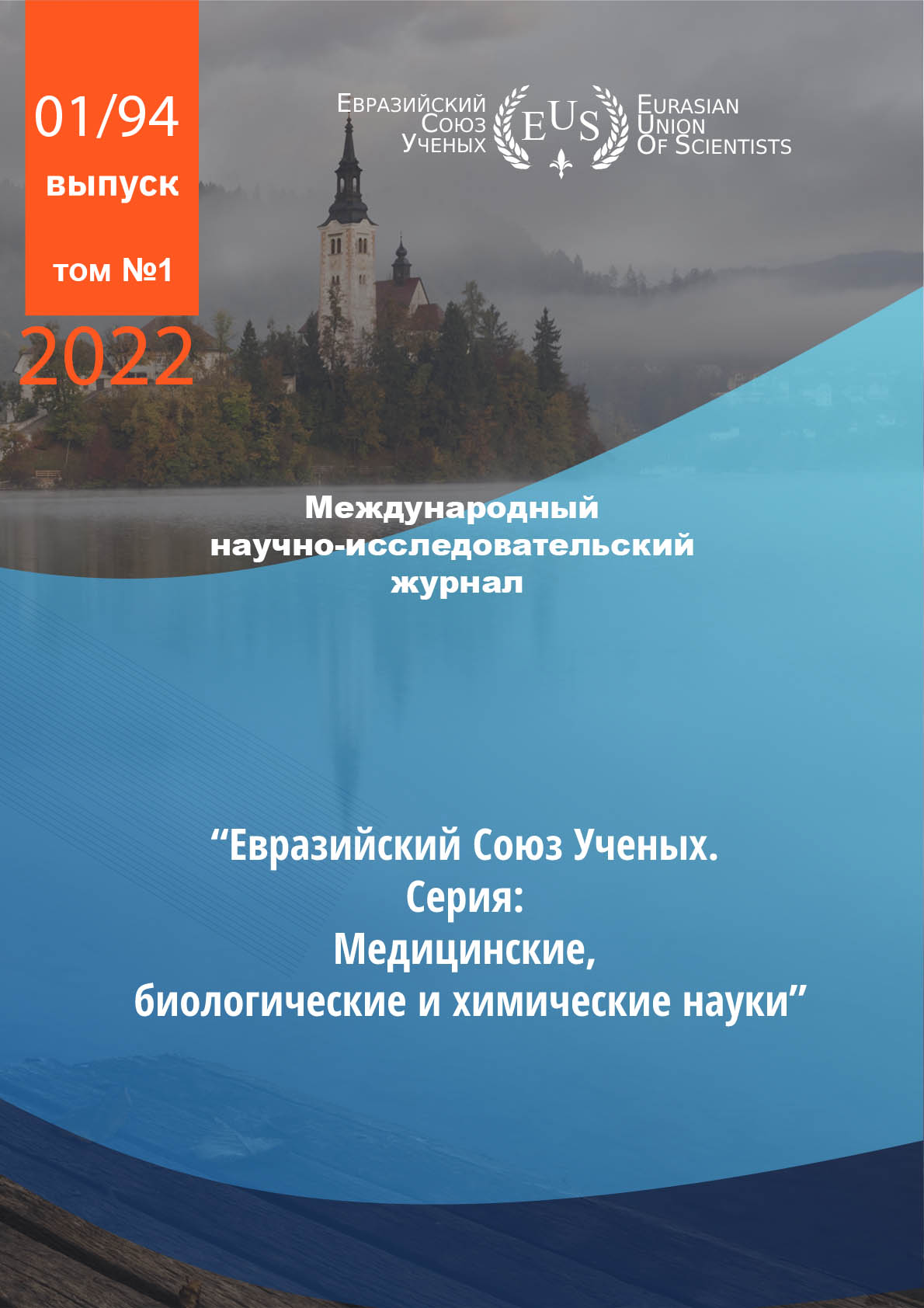EVALUATION OF IMMUNE RESPONSE INDICATORS IN PATIENTS WITH HIV INFECTION AND OPPORTUNISTIC INFECTIONS.
Abstract
The human immunodeficiency virus of the first type (HIV-1) was discovered in 1983. Since the beginning of
the epidemic, 32.7 million people have died from AIDS-related diseases. According to epidemiological data at the
end of 2019, 38.0 million people worldwide are living with HIV.[1] Despite the fact that humanity has been
working on HIV infection for a quarter of a century, many aspects of this disease remain unexplored, and the
pathology itself is a serious problem for public health worldwide.
The HIV virus penetrates the infection gate, attaches to T-lymphocytes (monocytes, macrophages and
dendritic cells) due to the interaction of the gp120 membrane glycoprotein with two cellular proteins - CD4 and
the CCR5 chemokine receptor, thus the HIV virus is introduced into the human lymphoid apparatus, where it
actively multiplies.[2], causing immunosuppression, which leads to various systemic disorders.
It is important to note that deaths in adults do not occur as a result of replication of the human
immunodeficiency virus, but as a result of secondary diseases preceded by the development of
immunosuppression, which underlines the importance of studying the immune response indicators in patients with
opportunistic infections, such as herpes viruses. As a rule, these viruses in the early stages of HIV infection can
cause lesions of the skin and mucous membranes, and with severe immunosuppression (the number of CD4
lymphocytes is less than 200 cells / ml), often recurrent skin-mucous ulcerative lesions, ulcers that do not heal for
a long time; organ lesions (central nervous system, gastrointestinal tract, lungs); generalized forms [3].
At the moment, the main treatment for HIV infection is ART, which acts on different processes of replication
of the human immunodeficiency virus. Despite the impossibility of a complete cure of the infection, it is possible
to control the course of the disease by suppressing the replication of the human immunodeficiency virus with ARV
therapy, thereby preventing the development of secondary diseases or achieving their regression, improving the
quality and life expectancy of the patient, reducing the risks of HIV transmission.
References
URL: http://www.unaids.org/en/resources/factsheet (data obrashhenija: 10.10.2021).
2.Pirozhkov I. A., Gpebova M. A., Kanaeva M. D., Hrupina A. S., Smirnova S. A., Ivopgin D. A., Smopjaninov A. B., Petc L. Vyjavlenie ccr5d32 gemopojeticheskih stvolovyh kletok pupovinnoj krovi: vozmozhnosti i perspektivy dlja lechenija pacientov s VICh-infekciej // Geny i kletki. 2013. №1.
3.Rassohin V.V., Beljakov N.A., Boeva E.V. Koinfekcija VICh i VGS // Komorbidnye sostojanija pri VICh infekcii. Chast' II. Vtorichnye i soputstvujushhie infekcii / Beljakov N.A., Rassohin V.V. SPb.: Baltijskij medicinskij obrazovatel'nyj centr. 2019. S. 131–198.
4.Kachanov D.A., Atangulov G.I., Hamade H., Lishkevich I.A., Elshashtiri M.N.D., Ivanjan Zh.N., Dubovikova V.O., Martirosjan A.M., Ulihanjan Je.G. Osobennosti naznachenija antiretrovirusnyh preparatov pri lechenii VICh-inficirovannyh pacientov // MNIZh. 2021. №2; URL: https://cyberleninka.ru/article/n/osobennostinaznacheniya-antiretrovirusnyh-preparatov-prilechenii-vich-infitsirovannyh-patsientov (data obrashhenija: 10.10.2021).
5.Shahgil'djan V.I. Ingibitory integrazy VICh — osnova jeffektivnoj i bezopasnojantiretrovirusnoj terapii // MS. 2017. №4; URL: https://cyberleninka.ru/article/n/ingibitory-integrazyvich-osnova-effektivnoy-i-bezopasnoyantiretrovirusnoy-terapii (data obrashhenija: 10.10.2021).
CC BY-ND
A work licensed in this way allows the following:
1. The freedom to use and perform the work: The licensee must be allowed to make any use, private or public, of the work.
2. The freedom to study the work and apply the information: The licensee must be allowed to examine the work and to use the knowledge gained from the work in any way. The license may not, for example, restrict "reverse engineering."
2. The freedom to redistribute copies: Copies may be sold, swapped or given away for free, in the same form as the original.







